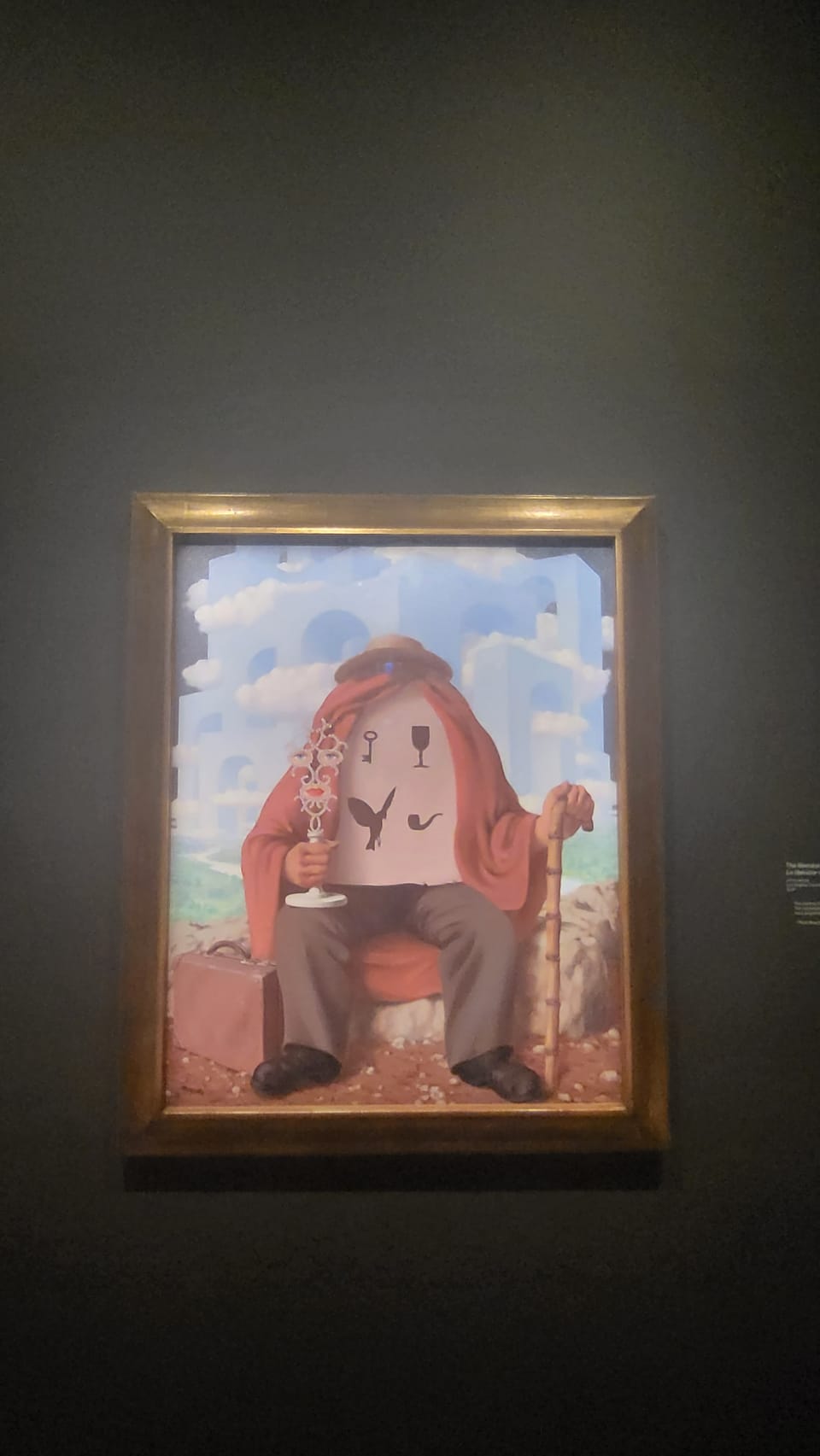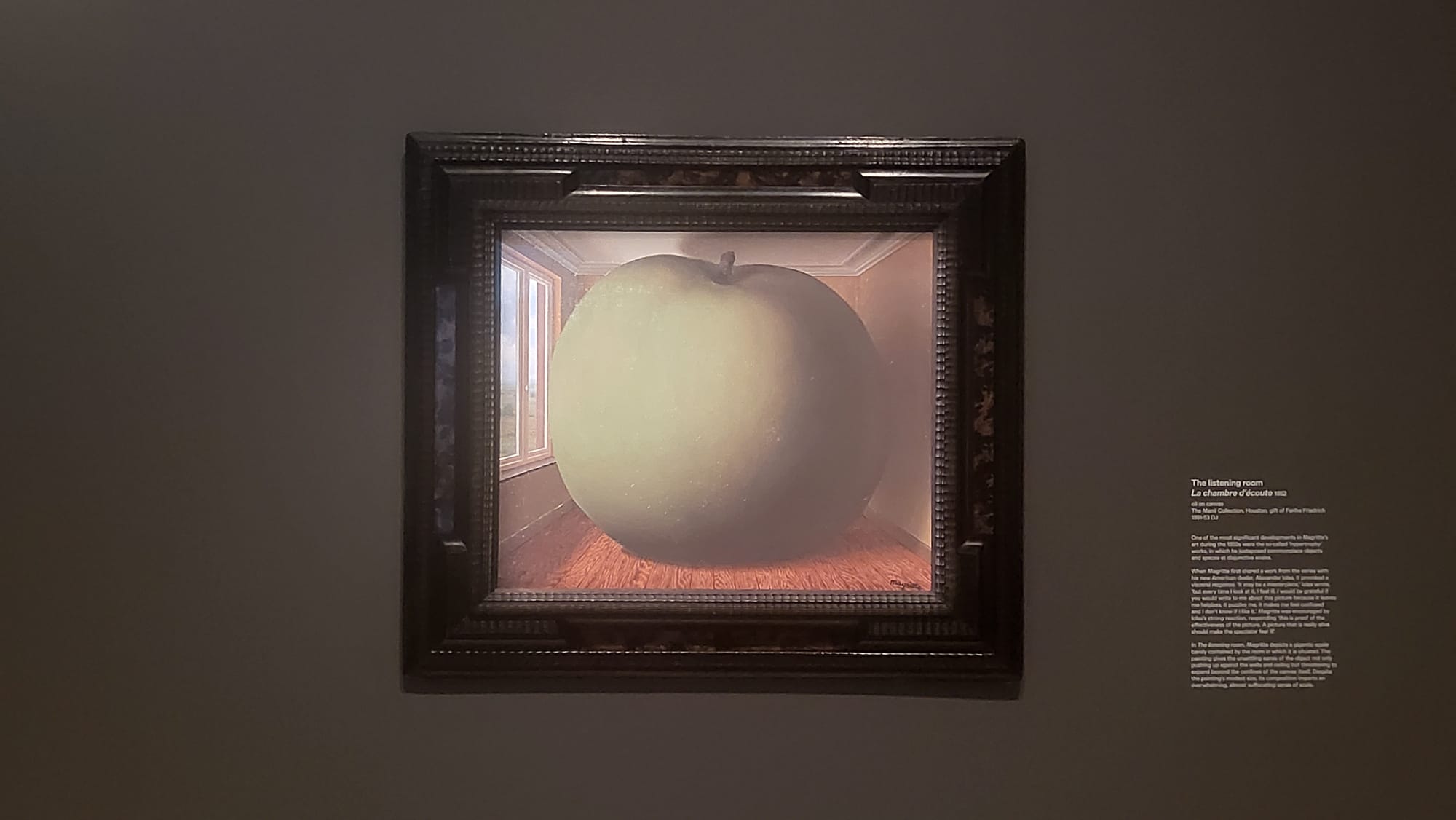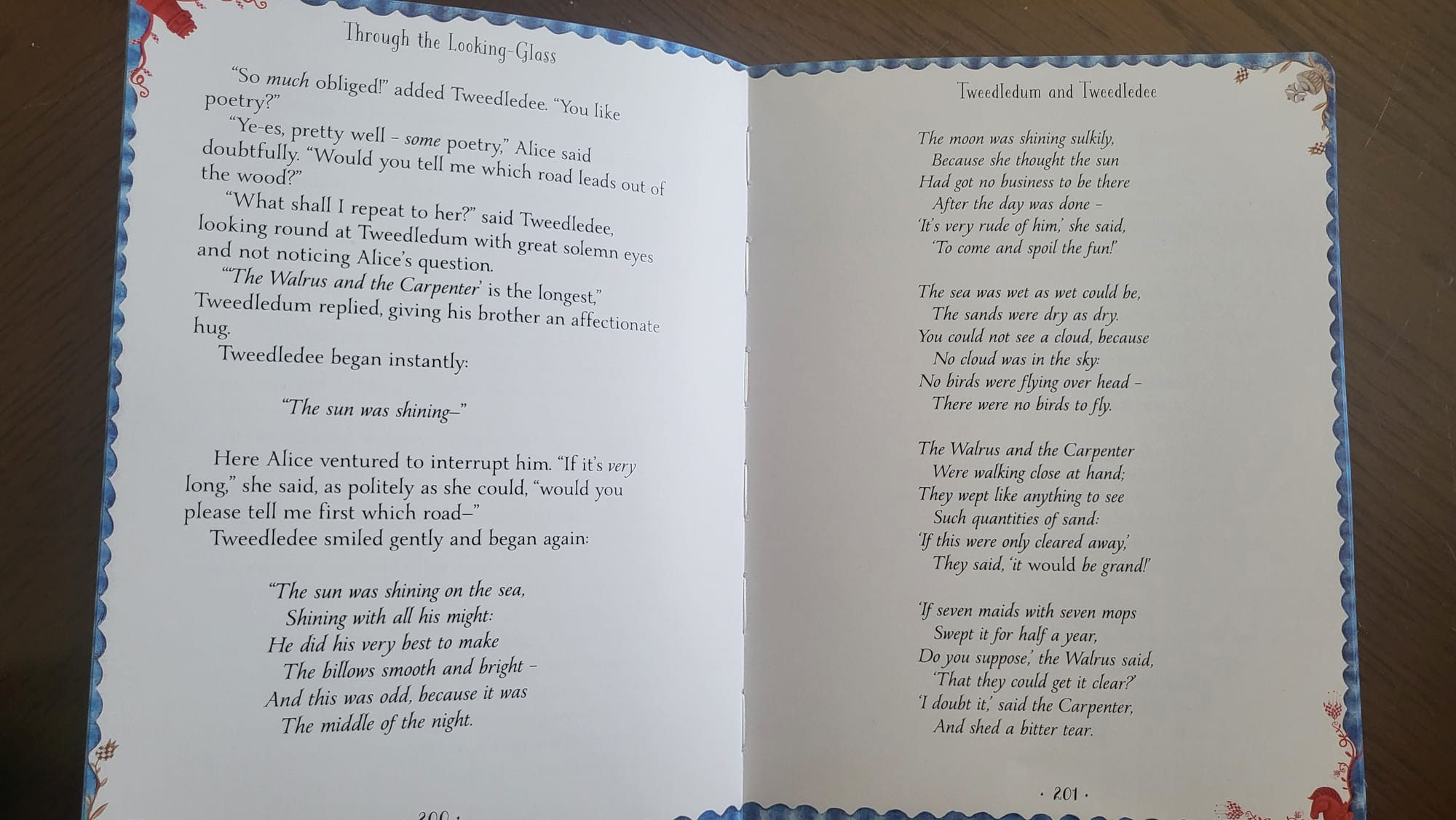Lewis Carroll’s Alice in Wonderland

In a Magritte exhibition, I had learnt that he was influenced by Alice in Wonderland; I decided to read this bestseller. The book overwhelmed me with questions, myself never considering how to get out of this maze again. Upon curiously watching Tim Burton’s Alice in Wonderland, the fog only thickened for me. Let us fall down the rabbit hole of ‘unanswerable’ dilemmas.
Alice in Wonderland became an intoxicating company for many notable individuals such as Leonard Bernstein, who took it to the coffin, and Salvador Dali. However, the most personally captivating was Rene Magritte. At first glance, Alice in Wonderland dovetailed with Magritte: Magritte’s paintings were influenced by themes of metamorphosis, elongated bodies, and distorted scale, mirroring Alice in Wonderland. However, there was more to it than I had thought. Magritte’s mother, a milliner, had committed suicide when Magritte was 13, thus giving him a variant of Post-Traumatic Stress Disorder (PTSD). This relates with the Mad Hatter, who is depicted with PTSD in the book, while suffering from past, painful memories of the loss of his family. The surrealism of Magritte’s works and the fantastical world of Wonderland, consulted by an relatable Mad Hatter, shows a shared sense of memories, much like the shifting landscapes of the mind.

In this classic by Lewis Carroll, the limits of reality are in a flux. Alice, a young, inquisitive girl, falls down a rabbit hole while pursuing a certain White Rabbit, finding herself in a land of eccentricity: ‘Wonderland’. While dealing with shrinking and largening issues, Alice also encounters a series of ‘enigmas’. From a caterpillar smoking a hookah answering questions in riddles, an endless tea party hosted by a Mad Hatter, to a White Rabbit, his world is filled with nothing but time. Wonderland makes even the bluntest topics sharp.
Alice in Wonderland is a relatively short book, but its unique approach more than makes up for it. An example of such is the measures the book takes to explain the Victorian morale of the impact of the over excess of curiosity.
From following the White Rabbit down the rabbit hole to eating a cookie marked ‘Eat Me’, curiosity assumes full command of Alice’s fingers. Her adventure is also interrupted by strange poems, some of them warning about the ‘perils of curiosity’, mirroring contemporary and past adults alike.

In The Walrus and the Carpenter, for example, a walrus and a carpenter lead oysters along a shore, eating them when they were far out of their territory. Its purpose is to warn people of the ‘dangers’ of curiosity, as the oysters became curious about what was interesting about this walk, eventually being fooled by the ruse. However, Alice continuously takes her curiosity to the next level. Although the creatures in Wonderland warn of curiosity, nothing ‘horrible’ happens to Alice in the book, a reminder from Carroll to stay hungry and stay curious. Even one of the most memorable scenes in Alice in Wonderland to me was ignited by Alice’s curiosity: Alice and the three gardeners as she wandered into a garden.
When Alice stumbled into a garden, three gardeners, at sight of her clothes, bowed before her. This is a reference to how workers judge people’s classes without starting. It may also be that the gardeners are so accustomed to ‘bowing’ to ‘superiors’ that they do it to anyone they meet, refusing to question authority. When Alice asked them what they were doing, they explained that a white rose tree was planted instead of a red one, thus they were painting the flowers red. The roses are capable of conveying the struggle to behave, look, and ‘click’ with other people. Moreover, the roses refer to the Lancasters’ red rose and the Yorks’ white rose in the War of the Roses.
Alice in Wonderland is a warping journey through reality, contemplation, and society. Almost all of the book is shrouded in riddles, reminding us that perception varies from every eye. It is almost satirical in its own way, Magritte only furthering this book to understanding the world. Curiosity is encouraged in this book, a lesson utilisable today. Reject any negative cliches about this book: who’s to say which is which?
Member discussion